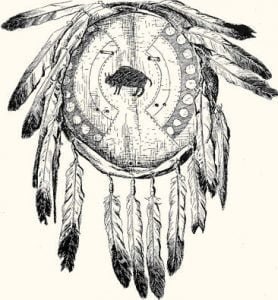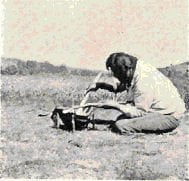Northern Shoshoni
Plains Indian Culture
Museum collections cannot illustrate this important phase of culture; but since no comprehensive view of the subject can be had without its consideration, we must give it some space. It is customary to treat of all habits or customs having to do with the family organization, the community, and what we call the state, under the head of social organization. So, in order that the reader may form some general idea of social conditions in this area, we shall review some of the discussed points. Unfortunately, the data for many tribes are meager so that a complete review cannot be … Read more
Religion and Ceremonies of the Plains Tribes
The sacred beliefs of these Indians are largely formulated and expressed in sayings and narratives having some resemblance to the legends of European peoples. There are available large collections of these tales and myths from the Blackfoot, Crow, Nez Perce, Assiniboin, Gros Ventre, Arapaho, Arikara, Pawnee, Omaha, Northern Shoshoni, and less complete series from the Dakota, Cheyenne, and Ute. In these will be found much curious and interesting information. Each tribe in this area has its own individual beliefs and sacred myths, yet many have much in common, the distribution of the various incidents therein forming one of the important … Read more
Household Utensils of the Plains Indians
In a preceding section, reference was made to baskets, which in parts of the Plateau area on the west, often served as pots for boiling food. They were not, of course, set upon the fire, the water within being heated by hot stones. Pottery was made by the Hidatsa, Mandan, and Arikara, and probably by all the other tribes of the Village group. There is some historical evidence that it was once made by the Blackfoot and there are traditions of its use among the Gros Ventre, Cheyenne, and Assiniboin; but, with the possible exception of the Blackfoot, it has … Read more





